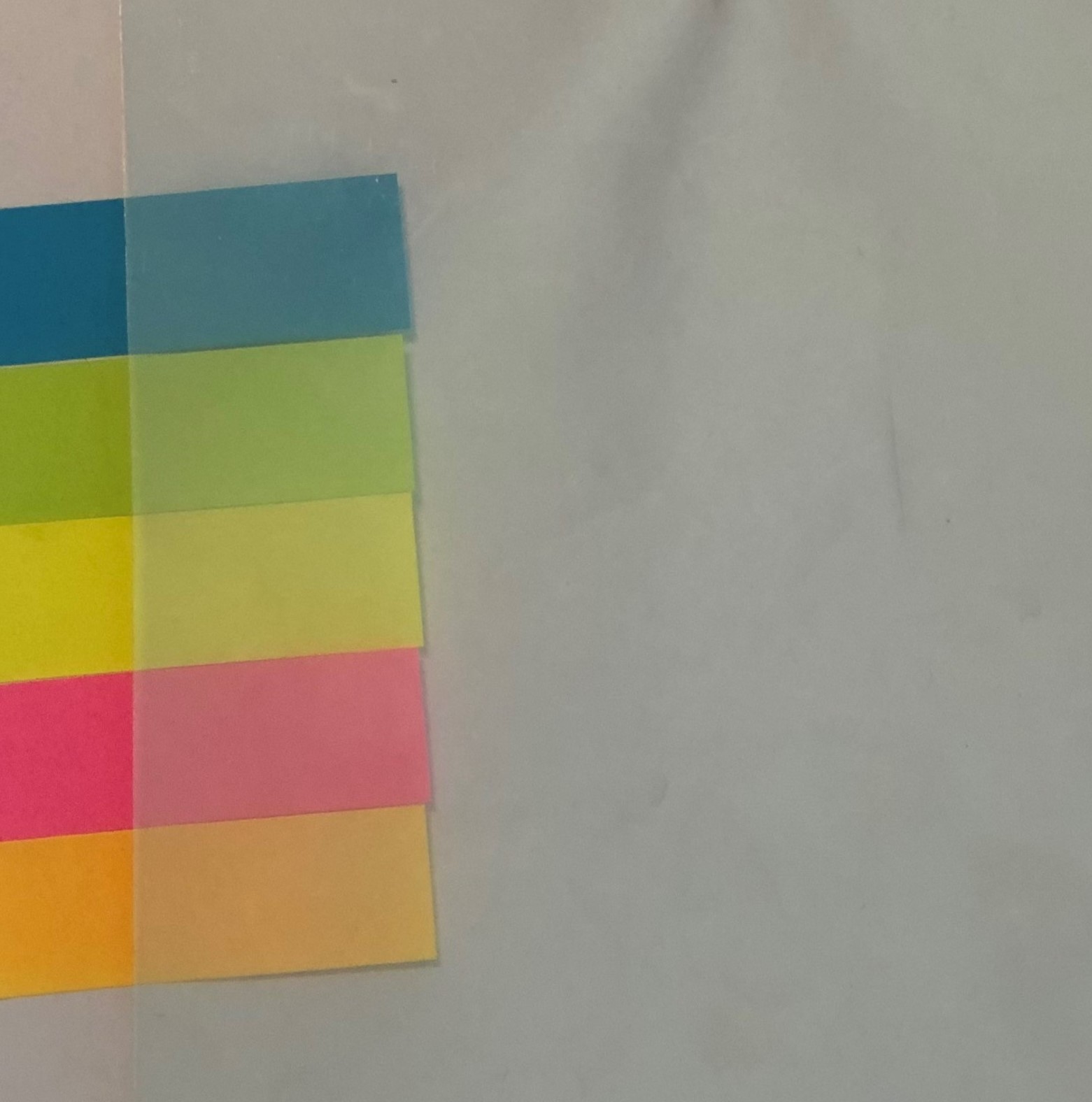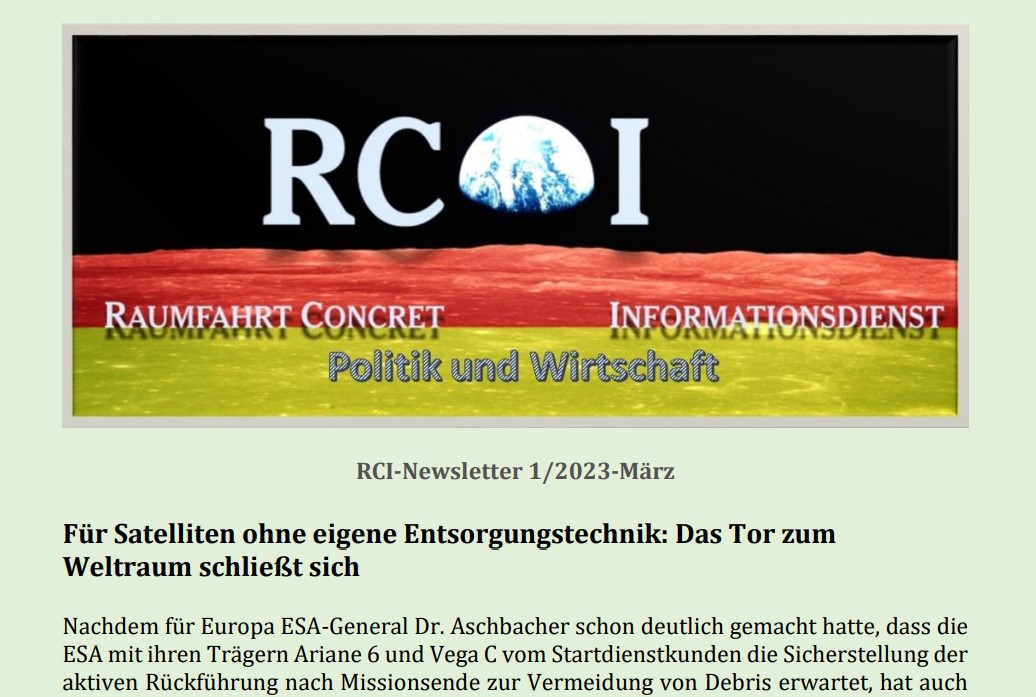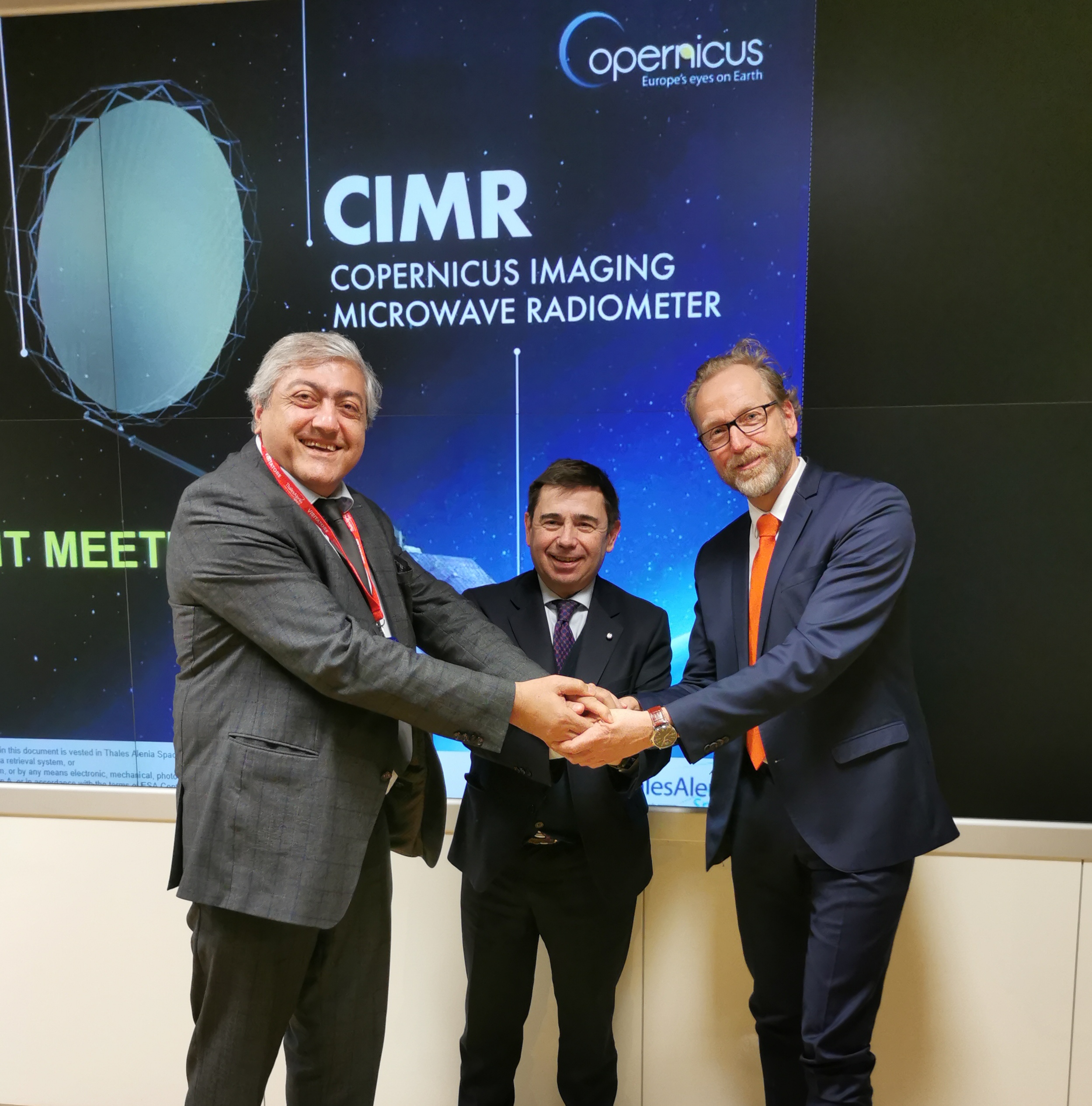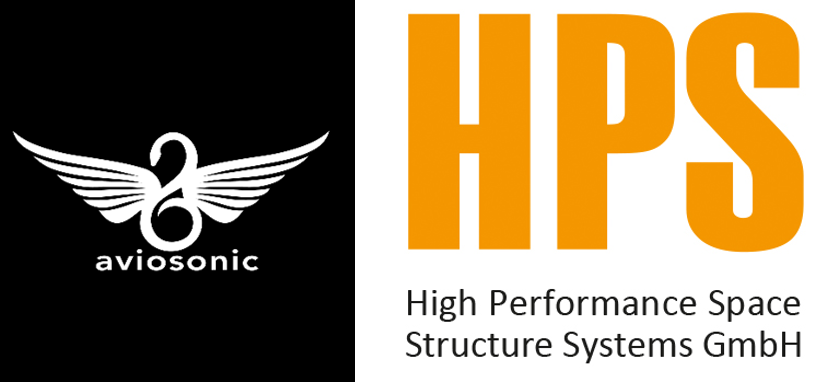May 2023
HPS Space News
HPS is Prepared to Provide ADEO Special Stealth Sail Edition for Europe´s IRIS2 Constellation Satellites
HPS is Prepared to Provide ADEO Special Stealth Sail Edition for Europe´s IRIS² Constellation Satellites
The ever-growing number of satellites orbiting Earth presents a significant challenge in terms of space debris management. As space agencies and private companies deploy increasing numbers of satellites, finding effective and sustainable solutions for their safe disposal has become paramount. In this regard, the ADEO Deorbit Sail, developed by HPS offers a groundbreaking technology that enables controlled and efficient satellite deorbiting for mitigating space debris and ensuring long-term sustainability in space. By harnessing the natural forces present in space, such as solar radiation pressure and atmospheric drag, the sail facilitates controlled reentry of satellites into Earth’s atmosphere at the end of their operational life.
ADEO has already reached ESA´s hightest level of maturity, TRL 9 and proven its reliability on a number of spaceflights; getting ready to serve Europe´s new constellation IRIS2 its NewSpace-team at HPS, Munich, take it even one step further and introduce the ADEO special “stealth” sail edition. While irritating reflections and view blocking effects of conventional constellations like Starlink cause a permanent nuisance to other users of space like astronomers during flight and deorbit, the constructors of Europe´s constellation IRIS2 are going can count on to receive from HPS an exclusive offer for a special version: the ADEO Stealth Sail –invisible, fully transparent and also available for most satellite types and operational orbits.
As HPS-CEO Ernst K. Pfeiffer explains: “Our ADEO deorbit system already presents numerous benefits and applications in satellite end-of-life management like cost- & mass-effective and sustainable deorbiting, compliance with current and future Space Debris Mitigation Guidelines, flexibility and adaptability. Now, with the special stealth version for dedicated to the architects of Europe´s IRIS2 constellation we take the decisive step to let Europe set yet another standard in space sustainability”.

MoU of Space SMEs Aviosonic and HPS to join forces fighting space debris – right in time for Europe´s new constellation Iris2
Mai 2022
Aviosonic´s patented DeCAS for tracking and re-entry footprint prediction extending high-tech-lead of Europe´s satellite deorbit system “ADEO” unassailably
(Munich-Milano, May 10th, 2023). At testified TRL-9 and with solid flight heritage the sail system “ADEO” already is the leading device for quickly deorbiting almost all satellites, thus preventing spacecrafts after their end of mission from becoming as well as producing new space junk for years to come. Because it is a sail, it does not produce any pollution itself, chemical or otherwise, and because this very sail will be in its next version also transparent and absolutely non-reflective, it does not cause any irritations to any space observer on earth. Munich based spacetech innovator HPS, a medium sized company with a subsidiary in Romania and a total headcount of 80, has invested – together with several institutional and industrial partners – 12 years of constant development and qualifying into ADEO, and is now ready to take yet another giant leap by joining innovative forces with Aviosonic Space Tech, Milan/Italy.
Aviosonic Space Tech, born in 2015, owns the patented DeCAS system (Debris Collision Alert System) for in-orbit/de-orbit tracking and re-entry footprint prediction of space vehicles. DeCAS is a 1U mm system which always maintains a constant link with the ground operation center allowing precise information on the satellite position, aliong with the calculation of the re-entry footprint in real time, with the aim of collision avoidance between satellites, satellites and aircrafts as well as to alert government agencies. The technical characteristics and modularity allow DeCAS to be installed on any space vehicle, offering different services depending on the mission requirements. DeCAS, which took part in different space missions, provides a unique service for satellite tracking, decommissioning and re-entry prediction in real-time.
Prof. Piermarco Martegani, CEO of Aviosonic Space Tech says:”The integration between DeCAS and ADEO allows the creation of a unique product on the market capable of strongly implementing the safety of space operations both during orbital and decommissioning re-entry phses, even in the event of failure of the hosting satellite. This safety information is also needed by the Air Traffic Management System. The collaboration between Aviosonic Space Tech and HPS is the demonstration that in order to guarantee safety during space operations, an international cooperation between SMEs is necessary.”
HPS-CEO Ernst K. Pfeiffer shows bulletproof confidence in the future of ADEO on the world market and emphasizes: “ADEO has all the facts on its side: first, all space industry badly needs a deorbit device like ADEO, since the faster the sail opens free orbit positions, the longer we can keep space as a sustainable surrounding. And, from second to infinite: ADEO combines TRL9 and flight heritage, offers a comprehensive range of models, beats economically as well as ecologically any other type of deorbit device, also it is already in serial production at HPS. And now we even join forces with the two outstanding innovators in their fields, and others will join, underlining once again what´s at the core of ADEO: 100 percent European, 100 percent SME, 100 percent sustainability in space – and exactly what Europe wants for Iris2.”
Contact for further information:
HPS: Dr. Daniel Stelzl, stelzl@hps-gmbh.com
Aviosonic: Prof. Piermarco Martegani, Piermarco.Martegani@aviosonic.it
ADEO Dossier: German: (https://www.hps-gmbh.com/tag/adeo/)
ADEO Dossier: English: (https://www.hps-gmbh.com/en/tag/adeo-en/)
Video: https://youtu.be/pUeSZzdn_6c
April 2023
All Launch Windows are closing for Satellites Without ADEO or Equivalent Deorbit Tech
After FCC, SpaceX, and ESA now also the three German startups racing for the smaller launchers` pole position in the commercial market made it clear that tickets to space will be available only to satellites prepared to be able to deorbit quickly after service.
The companies made their points recently in statements to the German space magazine “Raumfahrt Concret”.
For more details see: RCI-Newsletter-1-2023.pdf (hps-gmbh.com)
Ernst K. Pfeiffer, CEO of HPS, the German spacetech company that has developed ADEO to become the number 1 deorbit device for spacecrafts on the market, comments: “While we witness many cases of exorbitant differences in opinions when it comes to principles the space industry should follow, it is with great relief that we see this case ruled by unanimous voices echoing the new green spirit of deorbit from everywhere.”

3 – 2 – 1 – Next liftoff for the HPS space sail ADEO-N3 on the satellite carrier ION of the Italian mission provider D-ORBIT
January 2023
3 – 2 – 1 – Next liftoff for the HPS space sail ADEO-N3 on the satellite carrier ION of the Italian mission provider D-ORBIT
Already in the heat of last summer, HPS in Munich was preparing for the third mission of the innovative space brake sail ADEO-N, which unfolds automatically at the end of the mission and drives “its” satellite into the atmosphere to burn up. This technology avoids the formation of new space debris already on the ground and finally makes space missions sustainable.
The ION Satellite Carrier with ADEO-N3 with its sail area of 5sqm has been on board a Falcon 9 since the picture book start on January, 31, 2023 from spaceport Vandenberg, California, now on the way to the target orbit at 270 to 500 km altitude at 53 degrees inclination. Probably by the end of 2023 ADEO-N3 will then, as on previous flights – including one with ION also on Falcon 9 – deploy the braking parachute and remove its ION Satellite Carrier from orbit without leaving any residue many times faster than usual. With the flight heritage accumulated by then, the mature ADEO system heralds a “green” space age. Because at least for European missions or missions from Europe, there will – in all probability – no longer be any more launches without deorbit tech on board: The Green Deal of the EU will then also apply to “clean-green missions” in space.
On the current flight, ADEO-N3 acts as another verification of maturity for HPS. D-Orbit and HPS already captured what will happen high above the earth during a nominal mission as historical testimony on video during the last flight:
https://www.linkedin.com/feed/update/urn:li:activity:7021106640993021952
Video is free for publication
The attached video, recorded directly on site with the on-board camera of the ION satellite of the Italian cooperation partner D-Orbit, provides live proof: with the product of HPS, which is now ready for series production after twelve years of development with great support from ESA, DLR and the Bavarian government, a new era of responsibility in space is beginning. ADEO is manufactured in series by HPS at its sites in Munich and Bucharest, primarily for constellation satellites. ADEO products are available for satellites weighing up to 2,500 kilograms at flight altitudes of up to 800 km. Even higher-flying satellites can be operated with ADEO if they have previously lowered their orbit accordingly using their own propulsion. HPS CEO Ernst K. Pfeiffer: “With ADEO on board, satellites do not become space junk in the first place. And at conditions that are ALWAYS more economical than all other options.”
Largest joint innovation project in European spaceflight: CEOs of TAS-I, HPS and LSS kick off
January 2023
Largest joint innovation project in European spaceflight: CEOs of TAS-I, HPS and LSS kick off Phase C/D of the large deployable antenna “LDRS” in the CIMR project
Since the spectacular win of the €110 million contract in 2020 for the development and construction of an LDRS (Large Deployable ReflectorSubsystem) by the SME consortium led by HPS, the project supporting to secure a sovereign European level of innovation has been running like on rails despite all its complexity. The confidence of the end customer ESA and its prime contractor TAS-I for the mission, which has grown steadily over the course of the project’s development, has now found expression on 23.01.2023 in the sealing of the departure into Phase CD by the signing of the so-called “RIDER” for the construction and testing of a qualification model (EQM) in 2023/2024, followed by no less than two flight models (PFM and FM2).
The supporting technology pillars of the innovation project are, in addition to the main innovation partners LSS (development, construction and test of the large deployable reflector), the HPS subsidiary HPtex (mesh production for the reflector), FHP (CFRP struts for the reflector), INVENT (CFRP tube for the deployable arm) and vH&S (for the deployment control electronics), further 10 companies from seven European countries under the consortium leadership of HPS.
The Environmental Observation Mission under the Copernicus Earth Observation Program of the European Union is an essential element of the European Space Strategy as a highly ambitious project in the field of climate observation and the understanding of effects of climate change.
Photo (TAS-I): contract sealing – center: Massimo Camparini (CEO of the space company ThalesAleniaSpace Italy) and the CEOs of HPS, Ernst K. Pfeiffer (right) and of LSS, Leri Datashvili.

January 2023
Historical video evidence
from HPS and D-Orbit
On December 15, 2022, at 12:10 UTC, the world’s unique ADEO braking sail from the German space technology company HPS GmbH, Munich, opened the chapter of sustainability for international spaceflight 500 kilometers above the Earth: as planned, on time and precisely, the sail attached to the ION SCV 003 satellite unfurled over an area of 3.6 square meters to remove “its” satellite from orbit in the shortest possible time without leaving any residue, thus avoiding hazards for other space vehicles and making room for the next generation of satellites at its former orbital position. Preliminary studies and calculations indicate that this will reduce the descent time not by half, as originally expected, but rather by as much as five times.
The attached video, recorded directly on site with the on-board camera of the ION satellite of the Italian cooperation partner D-Orbit, provides live proof: with the product of HPS, which is now ready for series production after twelve years of development with great support from ESA, DLR and the Bavarian government, a new era of responsibility in space is beginning. ADEO is manufactured in series by HPS at its sites in Munich and Bucharest, primarily for constellation satellites. ADEO products are available for satellites weighing up to 2,500 kilograms at flight altitudes of up to 800 km. Even higher-flying satellites can be operated with ADEO if they have previously lowered their orbit accordingly using their own propulsion. HPS CEO Ernst K. Pfeiffer: “With ADEO on board, satellites do not become space junk in the first place. And at conditions that are ALWAYS more economical than all other options.”

